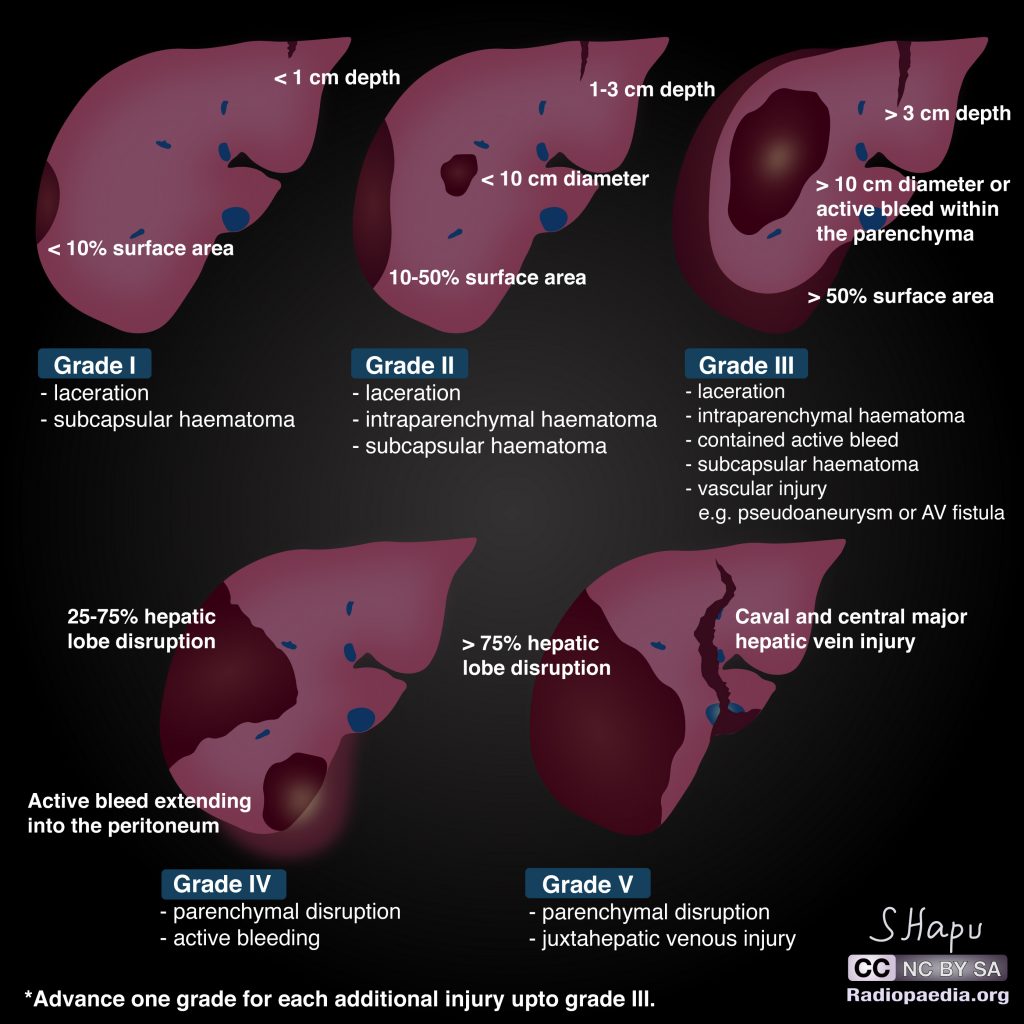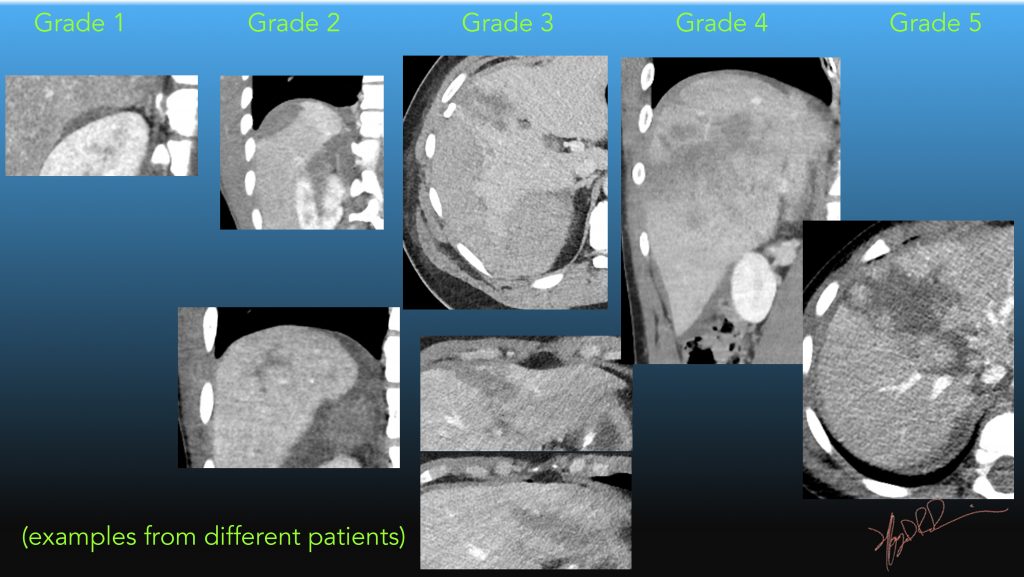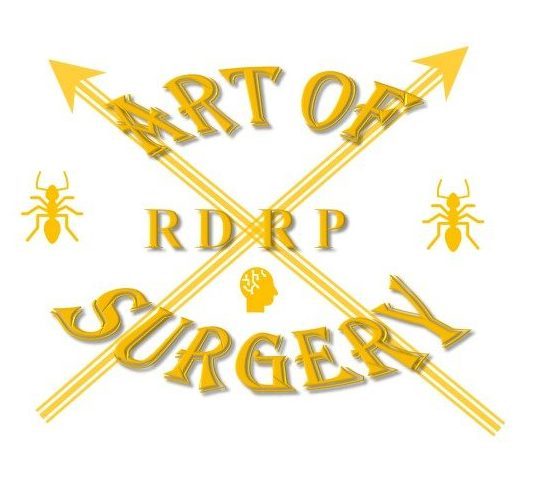Liver Injury Trauma Grading
The AAST (American Association for the Surgery of Trauma) liver injury scale, most recently revised in 2018, is the most widely used liver injury grading system 3.
The 2018 update incorporates “vascular injury” (i.e. pseudoaneurysm, arteriovenous fistula) into the imaging criteria for visceral injury 3.
Classification
· grade I
o haematoma: subcapsular, <10% surface area
o laceration: capsular tear, <1 cm parenchymal depth
· grade II
o haematoma: subcapsular, 10-50% surface area
o haematoma: intraparenchymal <10 cm diameter
o laceration: capsular tear 1-3 cm parenchymal depth, <10 cm length
· grade III
o haematoma: subcapsular, >50% surface area of ruptured subcapsular or parenchymal haematoma
o haematoma: intraparenchymal >10 cm
o laceration: capsular tear >3 cm parenchymal depth
o vascular injury with active bleeding contained within liver parenchyma
· grade IV
o laceration: parenchymal disruption involving 25-75% hepatic lobe or involves 1-3 Couinaud segments
o vascular injury with active bleeding breaching the liver parenchyma into the peritoneum
· grade V
o laceration: parenchymal disruption involving >75% of hepatic lobe
o vascular: juxtahepatic venous injuries (retrohepatic vena cava / central major hepatic veins)
Additional points
· advance one grade for multiple injuries up to grade III
· “vascular injury” (i.e. pseudoaneurysm or AV fistula) – appears as a focal collection of vascular contrast which decreases in attenuation on delayed images
· “active bleeding” – focal or diffuse collection of vascular contrast which increases in size or attenuation on a delayed phase


